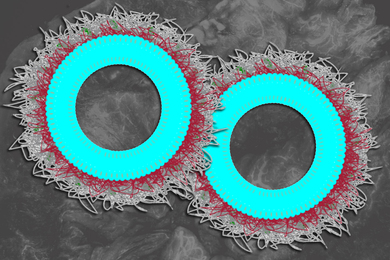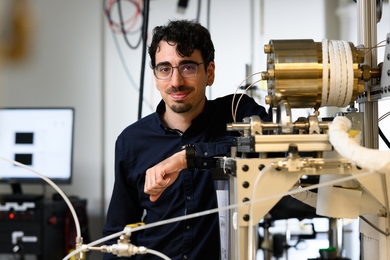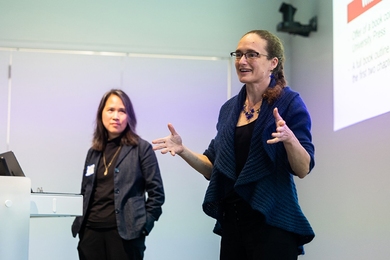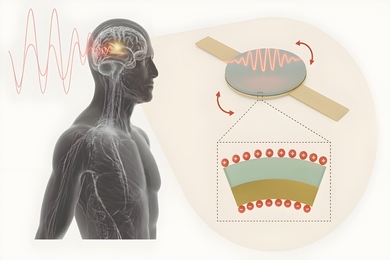Scientists have discovered that a tool normally used to improve stainless steel and other metal alloys can be applied to a decidedly nonmetallic substance: protein.
Researchers from MIT, the University of Wisconsin at Madison and DuPont reported their findings in the Sept. 30 issue of Physical Review Letters.
Scientists work with proteins just as they work with metals and other inorganic materials, designing new substances with enhanced properties, such as the ability to survive at high temperatures. But doing so involves sorting through the nearly endless possible ways to rearrange a protein's components, called amino acids -- an extremely time-consuming and computer-intensive task.
By applying a computational technique for alloy design called cluster expansion, the MIT researchers and their colleagues were able to search through potential amino acid configurations up to 100 million times faster than with conventional techniques. The work could prove useful in many fields, including medicine and biotechnology, which stand to benefit from the revamped proteins with superior properties.
Authors are UW-Madison Assistant Professor Dane Morgan, who initiated and led the project as a postdoctoral researcher in materials science and engineering at MIT; MIT Professor Gerbrand Ceder of materials science and engineering; MIT Assistant Professor Amy Keating of biology; MIT graduate students Fei Zhou (physics) and Gevorg Grigoryan (biology); and Dupont scientist Steve Lustig.
Commenting on the interdisciplinary nature of the work, Ceder noted that "as a researcher used to dealing with crystalline matter such as metals and oxides, the world of biology is pretty intimidating. But piece after piece you start to see that many of the scientific problems in biology have parallels in other fields."
Keating said, "It was fun and exciting to work together. We encountered the usual barriers that come up in joint work between different fields -- unfamiliar vocabulary and different conventions -- but we learned a lot from one another through the process."
The similarities between alloy and protein design first struck Morgan as he attended an MIT computational biology course taught by Keating and others.
"In an alloyed material, there are a number of different elements -- such as nickel, chromium and iron in stainless steel -- which are arranged on a lattice of sites," Morgan said. "It's the same thing with a protein: You have different amino acids occupying various sites in the protein backbone." The trick is determining exactly how to reshuffle these components to enhance the properties of the larger structure, whether it's a metal or a biological molecule.
Each protein's function depends on its unique three-dimensional structure, which, in turn, rests on the molecule's specific linear chain, or sequence, of 20 different amino acids. In protein design, scientists start with a protein of known sequence, structure and function -- such as an industrial enzyme that breaks up grime. They then hunt for modified amino acid arrangements that augment the molecule's natural function.
Beginning with an existing protein structure does reduce the number of possible ways to rearrange the amino acids, but the numbers are still mind-boggling.
"For a sequence of just 100 different amino acids, you have 20100 possible combinations," Morgan said. "My guess is this is more than the number of atoms in the universe."
"Cluster expansion breaks the design problem into meaningful pieces that you can get your brain and your computer around," Morgan said.
To demonstrate the ability of cluster expansion to manage this complexity, the team focused on protein stability. Highly stable proteins fold into tight three-dimensional structures; less stable ones tend to fall apart. Because a protein's stability relates to its energy in the folded, 3-D state, scientists can calculate an energy term to predict whether a particular amino acid sequence will adopt a robust structure.
Cluster expansion breaks an amino acid sequence into small subclusters, consisting of one, two, three or more amino acids. An effective energy term is then determined for every possible amino acid sequence within each subcluster. Once the energies of each subcluster are known, they can be quickly added to give the energy of the entire sequence.
When the team applied the method to two well-known proteins, they found it calculated amino acid sequence energies that matched well with those computed by an established technique. The difference? The traditional technique needed more than three minutes to make each energy calculation while cluster expansion took just a microsecond.
Keating is excited about the potential contribution of cluster expansion to biology. "It may make some genomic studies that we have been dreaming about feasible whereas they really weren't before."
The work was funded by the National Institutes of Health and the Dupont-MIT Alliance.
A version of this article appeared in MIT Tech Talk on October 26, 2005 (download PDF).





